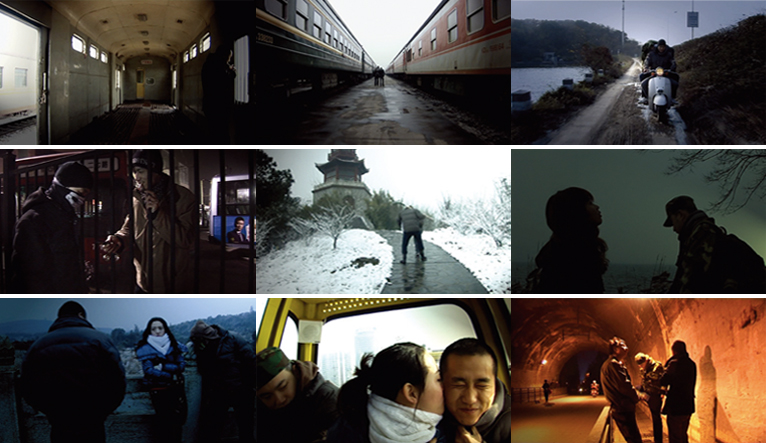IRRELEVANT
| May 28, 2012 | Post In LEAP 14

Stretching from photography to video and installation, WAZA’s latest multimedia work Social Youth divides three spaces into different layers of depth. First, the audience notices small posters of photography works arranged in line in a hallway. Immediately after, a pitch-black screening room resembling the video halls popular in China in the 1980s follows, while the faint sound of the classic Taiwanese pop song Wish you a pleasant journey from the next room prompts visitors to move forward into the final, dazzlingly white exhibition hall, which is taken up by an installation.
Visitors who have the patience to stay for the lengthy 90-minute film are somewhat of a rarity: the slow-moving images in the “video hall” strip the viewer of the pleasure that normally accompanies watching “video art,” forcing them to worry instead about the motivation for the characters before them, and they ultimately lose interest. However, among those in the audience who manage to resist the seductive voice calling them to the next gallery space and actually persevere in watching the film, many may wonder: is this video art, or a film? Although the identity of the protagonists is all-too ambiguous, Social Youth still retains many narrative threads. Yet the poor acting skills of the amateur WAZA performers, the endless waiting in the plot, the indescribable violence, the gloomy mood, the faceless roles, and the documentary-style shooting make it seem like a film of Italian neorealism, here with Wuhan as its backdrop.
According to WAZA member Hu Ge, the reason WAZA mounted such a work— one that does not really resemble most “genre-less” contemporary art— in the gallery space is an attempt at “forgetting subjectivity.” The film is the background for some unknown activity. The panting sound, seemingly out of nowhere, dispels the sense of the protagonists’ presence in the picture plane, implying something or somebody outside of the frame, not bold enough to appear before the viewer but still slyly “peeping” in on the protagonists. Worth noting, also, is how the details in the sound effects (whereby sound and image detach, background noises suddenly fade away, and so on) remind the viewers (à la the same “subjective” perspective mentioned above) that a similar possibility also exists in their own lives: their own subjectivity may have been imperceptibly replaced by another subjectivity, not their own.
Such anxiety exists universally. Ever since China’s Opening and Reform, the concept of “social youth” has gone from the simple “unemployed youth” to but young vagabonds who have completely lost hope in reality— because, actively or passively, they have repeatedly come against society, against the brick wall that is the diversification of ownership, and in the process, have become aware of their inability to control their own lives. Confronted with such distressing conditions, WAZA and the social youth who collaborated with them have put a “film” in an exhibition hall. Going against the aesthetic inclinations of the contemporary art system, this action employs the “irrelevant” just enough to highlight one’s own fragile existence. (Translated by Marianna Cerini)


